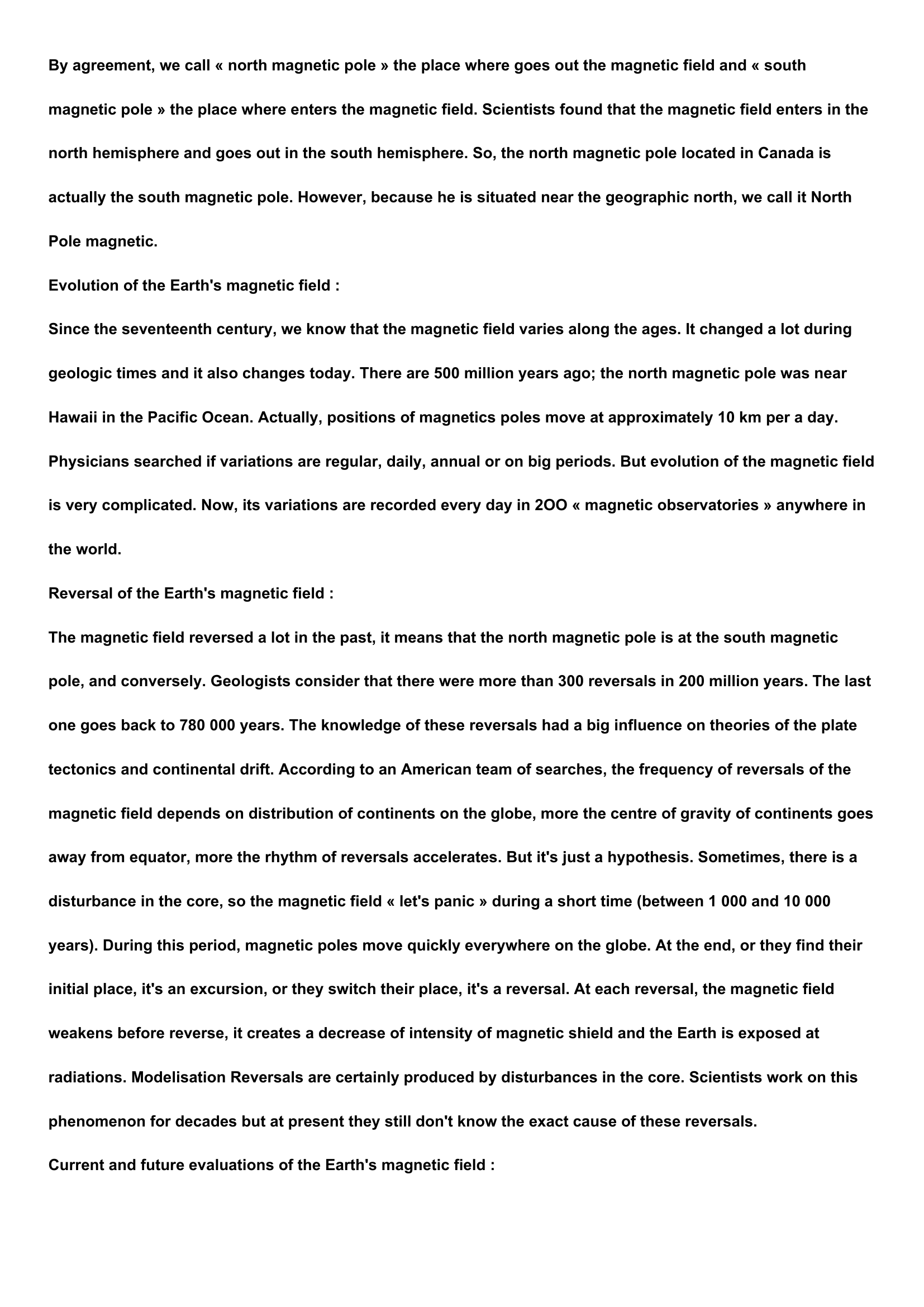champ magnétique
Publié le 15/12/2013

Extrait du document
«
By agreement, we call « north magnetic pole » the place where goes out the magnetic field and « south
magnetic pole » the place where enters the magnetic field.
Scientists found that the magnetic field enters in the
north hemisphere and goes out in the south hemisphere.
So, the north magnetic pole located in Canada is
actually the south magnetic pole.
However, because he is situated near the geographic north, we call it North
Pole magnetic.
Evolution of the Earth's magnetic field :
Since the seventeenth century, we know that the magnetic field varies along the ages.
It changed a lot during
geologic times and it also changes today.
There are 500 million years ago; the north magnetic pole was near
Hawaii in the Pacific Ocean.
Actually, positions of magnetics poles move at approximately 10 km per a day.
Physicians searched if variations are regular, daily, annual or on big periods.
But evolution of the magnetic field
is very complicated.
Now, its variations are recorded every day in 2OO « magnetic observatories » anywhere in
the world.
Reversal of the Earth's magnetic field :
The magnetic field reversed a lot in the past, it means that the north magnetic pole is at the south magnetic
pole, and conversely.
Geologists consider that there were more than 300 reversals in 200 million years.
The last
one goes back to 780 000 years.
The knowledge of these reversals had a big influence on theories of the plate
tectonics and continental drift.
According to an American team of searches, the frequency of reversals of the
magnetic field depends on distribution of continents on the globe, more the centre of gravity of continents goes
away from equator, more the rhythm of reversals accelerates.
But it's just a hypothesis.
Sometimes, there is a
disturbance in the core, so the magnetic field « let's panic » during a short time (between 1 000 and 10 000
years).
During this period, magnetic poles move quickly everywhere on the globe.
At the end, or they find their
initial place, it's an excursion, or they switch their place, it's a reversal.
At each reversal, the magnetic field
weakens before reverse, it creates a decrease of intensity of magnetic shield and the Earth is exposed at
radiations.
Modelisation Reversals are certainly produced by disturbances in the core.
Scientists work on this
phenomenon for decades but at present they still don't know the exact cause of these reversals.
Current and future evaluations of the Earth's magnetic field :.
»
↓↓↓ APERÇU DU DOCUMENT ↓↓↓
Liens utiles
- SQUID SQUID, dispositif de mesures magnétiques permettant de déterminer avec une grande précision l'aimantation d'un matériau pour de larges intervalles de température et de champ magnétique extérieur.
- magnétomètre 1 PRÉSENTATION magnétomètre, instrument servant à mesurer l'intensité d'un champ magnétique.
- champ magnétique terrestre - géologie et géophysique.
- La notion de champ magnétique
- Le champ magnétique













